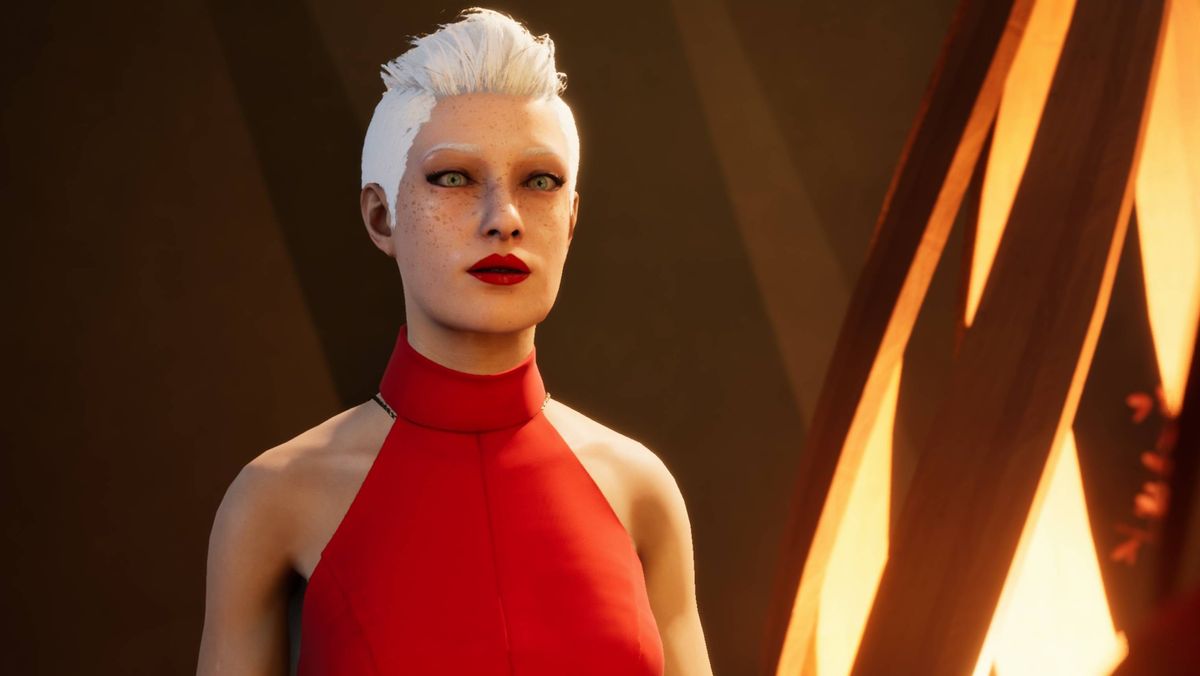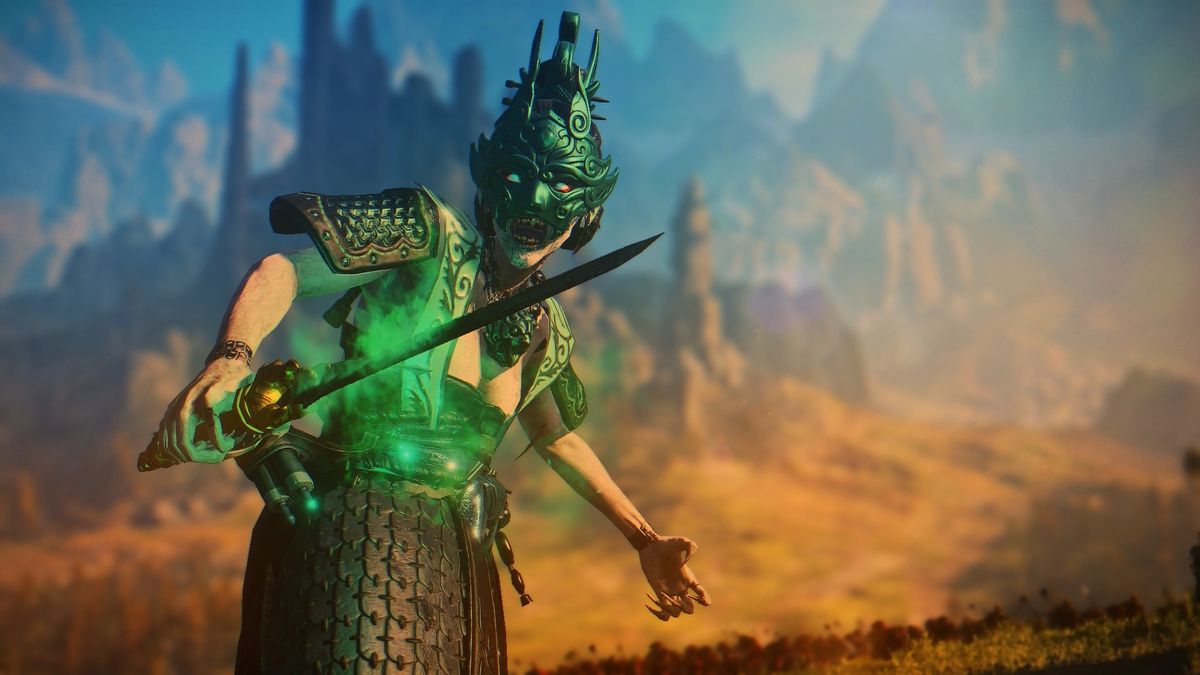Need to know
What is it? A narrative adventure about vampires.
Expect to pay $50/£35
Release date May 19, 2022
Developer Big Bad Wolf Interactive
Publisher Nacon
Reviewed on AMD Ryzen 5 3600, Nvidia RTX 2080 Super, 32 GB RAM
Multiplayer? No
Link Official site
The virtual legacy of Vampire: The Masquerade is patchy to say the least, but the tabletop RPG did inspire one of the best-written video games of all time. 2004’s Vampire: The Masquerade – Bloodlines was a sultry, humorous, and delightfully twisted portrayal of Los Angeles’ undead underbelly, filled to bursting with weird and wonderful characters. Cackling bikers, deranged nightclub hostesses, smouldering late-night radio hosts, and even murderous prosthetics experts. It may have been buggier than a rotting corpse, but it excelled at making vampires seem sexy, scary, and above all, strange.
Vampire: The Masquerade: Swansong does the complete opposite. Its cabal of backstabbing bloodsuckers are painfully boring, frequently stupid, and exhibit all the charisma of a Nosferatu living in a bin. Big Bad Wolf’s narrative RPG has grand ambitions and spots of potential, but it all falls apart in a mess of half-baked ideas and a script sucked dry of personality.
Setting its vampire story in Boston, Swansong sees you play as three different vampires, all high-ranking members of the Camarilla (a sort of cross between a governing body and the Mafia). Emem is a politically ambitious vampire who struggles with authority, while Galeb is a suave and loyal Camarilla henchman. Finally, there’s Leysha, who has recently awoken from three years in hibernation due to the debilitating mental illness that commonly afflicts her Malkavian clan.
The decision to focus on a trio of characters makes for a confusing opening. Swansong gives a rapid-fire overview of the three perspectives, while simultaneously introducing the rest of the Camarilla court and sketching out the off-screen events that kickstart the plot. Gradually, it becomes clear that a party organised by the Camarilla to seal an alliance with a local group of thaumaturges (vampire warlocks) has been attacked by unknown assailants, and the head of the Boston Camarilla, Hazel Iversen, dispatches the trio on separate missions to investigate the debacle.
Structurally, Swansong’s closest living relative is Life is Strange, combining elaborate dialogue sequences with third-person exploration and puzzle solving. The systems behind both are more involved than Life is Strange, in ways that I’ll get into later. But none of it ultimately matters because the most crucial element in Swansong’s design—the writing—is devastatingly bland.
To begin with, the script is almost entirely humourless. Nearly every character is droningly serious, delivering exposition in thick, flavourless spoonfuls like cod liver oil. This isn’t to say that everyone should be quipping like they’re in a Marvel movie, but compared to the fireworks-display of a script that Bloodlines has, Swansong’s dialogue is flatter than a hedgehog on a highway.
The bigger problem, however, is how muted each character’s personality is. Galeb is a vampiric Agent 47, with a persona that runs little deeper than his suit. In fact, 47 is arguably the more expressive of the two, as at least he’ll crack the odd pun while he’s garrotting some trust-fund ghoul. Emem’s rebellious streak, meanwhile, mostly manifests in petulant whining that makes her difficult to empathise with. Leysha is the strongest character, with her polite, slightly anxious demeanour masking a deep psychological instability. Unfortunately, she’s accompanied by a profoundly irritating child vampire called Halsey, and her character arc revolves largely around her affection for the bothersome goblin she calls “sugar fangs”.
The lacklustre writing undermines the rest of the game, which is a shame, as there is some ambition on show. Narrative choices are both extensive and genuinely affect the trajectory of the plot. In an early example, Emem heads to the base of the warlocks to attempt a reconciliation, but ends up tossed in their underground dungeon. She eventually escapes, and can head straight for a confrontation with the warlock’s leader. But a little exploration reveals a new character, and a potentially very different outcome to both the scene and the entire story.
There are also some decent ideas explored in the story itself. The central mystery surrounding who’s behind the attack is intriguing, while the character conflicts produce some stimulating drama. The strongest of these is Leysha’s toxic relationship with her vampire therapist. The concept of a vampire therapist is probably the closest to a joke that Swansong gets, but his disturbingly domineering demeanour toward Leysha overrides the inherent absurdity in the idea, and their storyline delivers the best twists in the game.
Toothless
Sadly, these are isolated highlights, scattered canapés in an otherwise lukewarm buffet of ideas. Outside of the writing, Swansong’s biggest problem is that inhabiting its vampires is not much fun. Each character has an elaborate skill-tree that covers dialogue, environmental skills like deduction and lockpicking, and clan-specific vampire powers. The intent is to let you tailor each character in highly specific ways. But the XP needed to upgrade these abilities is tied to how well you perform in each scene. Given that each character only has a handful across the game’s 15-hour-length, this means that one badly handled scene can severely hamper that character’s progression. Imagine if every bad choice in Telltale’s The Walking Dead made the next one harder to get right, and you’ve got some idea of the problem that can develop in Swansong.
While this issue can be avoided with good fortune, a harder flaw is how trite some of the game’s dialogue sequences are. Key exchanges in Swansong are known as confrontations, wherein you need to verbally defeat your opponent in a protracted argument with multiple phases. But rather than saving this system for the most significant story beats, Swansong often applies it to trivial bunfights. One ‘confrontation’ sees Galeb, a century-old vampire whose clan’s entire shtick is using people like puppets, struggling to convince a parking attendant to open some electronically locked garbage containers. Said parking attendant is admittedly a ‘thin-blood’ vampire, but it’s hardly a thrilling premise for a battle of wills.
The overall quality of each scene also varies significantly. When he isn’t shouting at people in a car park, Galeb’s chapters are by far the best in the game. The first sees him trawling through a lavish penthouse apartment, attempting to solve the murder of a decapitated businessman. It’s a well-constructed detective puzzle with a clever final twist. The second is (somewhat fittingly) reminiscent of Hitman’s Hokkaido level, with Galeb exploring a large subterranean facility where there are multiple solutions to the puzzle presented to you.
Not all the chapters are so rewarding. Emem’s two major scenes are also the weakest. The warlock dungeon looks cool, but the action mostly centres around some weirdly implemented platforming and an annoying pattern-matching puzzle. Her second act sees you snooping around a dingy backlot trying to get some biker vampires to join your crew. There’s a decent hacking-themed puzzle within this, but I’m not sure that hacking puzzles are what players will be flocking to Swansong for.
Indeed, you may have noticed by this point that Swansong isn’t very… vampire-y. You occasionally get to feed on humans to boost one of your ability bars, but the way this is implemented in the game’s limited spaces makes the mechanic feel crowbarred in. Moreover, your vampiric abilities often play second-fiddle to puzzles themed around phones, laptops, and other electronic equipment. There are also some truly bizarre one-off conundrums that appear to have been lifted from mid-nineties adventure games.
Letting off steam
The worst example of these appears in Leysha’s second chapter, where she needs to escape from the basement of a vampire bar prowled by heavily armed mercenaries. It’s worth noting that Leysha’s Malkavian abilities let her turn herself invisible and mimic the appearance of other people, meaning she’s more than equipped for stealth and subterfuge. But instead of building escape routes around these abilities, Swansong finds an excuse to nullify these powers, then contrives the stupidest puzzle since Gabriel Knight 3’s cat-hair moustache.
Are you ready for this? It’s a doozy. The guard blocking your way just happens to be stood beneath a pipe that’s venting boiling-hot steam. Despite repeatedly scalding his big bald bonce, the guard refuses to move from the doorway, but also refuses to wear the ballistic helmet all the mercenaries have been issued, instead setting it aside on some crates. To escape the area, you need to find a way to increase the steam pressure until it poaches his head like an egg and kills him. Bear in mind that this is a very serious vampire RPG, and not a rejected Monkey Island game.
At least Swansong looks nice. Sometimes. Areas like the Red Salon bar let the environment designers have a bit of fun, although much of the game takes place either in nondescript rich-person apartments, or grey concrete interiors like sewers or ventilation systems. Also, aside from a couple of skyline panoramas, Swansong doesn’t do much to represent Boston as a place. You don’t get a sense of the city’s unique history and architecture as you do in, say, Fallout 4. It could be set in New York or Los Angeles and you wouldn’t think much of it.
Ultimately, Swansong doesn’t seem to know what kind of game it wants to be. It’s variously a talking simulator, a detective game, a classically styled adventure puzzler, and a diet Hitman sandbox. There’s even a late-game stealth section that’s completely mechanically detached from the rest of the experience. As abruptly introduced stealth sections in non-stealth games go, it isn’t terrible. But I’d happily trade it and so much else for a stripped-back, Telltale-style story that frontloaded Swansong’s narrative choices, or a dedicated supernatural detective game. Or just a game that didn’t make being a vampire feel like such a chore. Between this and the missing-in-action Bloodlines 2, Vampire: The Masquerade’s heyday feels more distant than ever.
The Verdict
50
Vampire: The Masquerade – Swansong
Vampire: The Masquerade – Swansong offers an impressively flexible story, but that can’t save it from its mediocre writing and scattershot game design.


